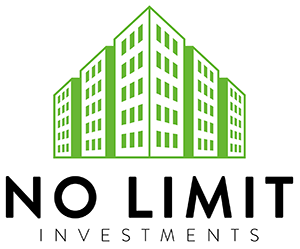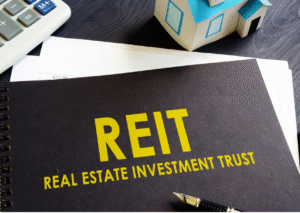What Does Real Estate Refinancing Really Mean?
Real estate refinancing is the process of replacing an existing mortgage with a new one—often to secure better terms, adjust loan structure, or access built-up equity. For investors, refinancing can be a strategic move that enhances portfolio performance and strengthens cash flow management. When executed wisely, refinancing allows property owners to reinvest in more profitable opportunities or reduce long-term interest expenses.
Unlike homebuyers seeking their first mortgage, real estate investors refinance for strategic reasons: lowering rates, freeing equity, or restructuring loans to fund expansion. It’s a powerful wealth-building tool when paired with sound analysis and the right lending partner. According to the Federal Reserve, refinancing activity tends to rise when market interest rates drop, as investors aim to capitalize on improved borrowing conditions (Federal Reserve, 2024).
Why Should You Refinance Your Investment Property?
The decision to refinance should always align with your long-term investment objectives. For instance, if your goal is to build a larger rental portfolio or improve property cash flow, refinancing can unlock equity that fuels growth.
Key benefits of refinancing include:
- Lower monthly payments: Reducing your interest rate or extending the loan term can decrease monthly obligations.
- Increased liquidity: Accessing property equity through a cash-out refinance provides capital for new acquisitions or renovations.
- Improved returns: Smart refinancing can reduce financing costs and increase return on investment (ROI).
- Flexible debt management: Investors can shift from short-term hard money loans to longer-term financing solutions.
However, refinancing isn’t always the right move. Timing, market conditions, and the type of property matter greatly. Investors should carefully evaluate whether projected savings and opportunities outweigh refinancing costs such as closing fees or prepayment penalties (U.S. Department of Housing and Urban Development).
What Are the Main Types of Real Estate Refinancing Options Available Today?
Understanding the diverse range of real estate refinancing options is crucial for making informed investment decisions. The most common include:
- Rate-and-Term Refinancing: This replaces your existing loan with one that has more favorable terms, typically to reduce interest rates or adjust loan duration.
- Cash-Out Refinance: Allows you to tap into your property’s equity and receive cash for reinvestment, renovations, or debt consolidation.
- Portfolio Refinancing: Enables investors to refinance multiple properties at once, streamlining debt under a single lender.
- Equity-Based Financing: This is particularly useful for investors who have strong asset positions but need flexible underwriting.
These refinancing choices align well with investor-friendly loan types offered by No Limit Investments, such as Fix & Flip Loans, Buy & Hold Mortgages, and BRRRR Financing. Each serves distinct phases of the investor’s journey, from acquisition to long-term wealth creation. For instance, BRRRR (Buy, Rehab, Rent, Refinance, Repeat) financing supports continuous scaling by recycling capital through refinancing at each cycle.
How Do Loan-to-Value Ratios and Credit Scores Affect Refinancing?
Two of the most influential factors in real estate refinancing are loan-to-value (LTV) ratio and credit score.
- Loan-to-Value (LTV): This ratio measures the amount of the loan compared to the property’s appraised value. Most lenders prefer an LTV below 75–80% for investment properties, as it indicates lower lending risk.
- Credit Score: A strong credit profile signals reliability and enhances approval odds. Borrowers with higher credit scores often qualify for lower interest rates and better terms.
Investors should also understand After-Repair Value (ARV) if refinancing a rehabbed or flipped property. ARV determines how much the property will be worth after improvements, impacting the available equity.
No Limit Investments incorporates flexible underwriting standards and considers the full financial profile of investors, particularly when structuring real estate financing solutions that balance both LTV and cash flow strength.
What Role Do DSCR Loans Play in Real Estate Refinancing Options?
A Debt Service Coverage Ratio (DSCR) loan is a type of real estate financing that evaluates a property’s ability to generate enough rental income to cover debt payments. Instead of relying heavily on personal income verification, DSCR loans assess the property’s cash flow performance.
The formula for DSCR is simple:
DSCR = Net Operating Income (NOI) ÷ Total Debt Service
A DSCR above 1.25 generally indicates a healthy buffer between income and loan obligations. These loans are particularly useful for investors managing multiple rental properties, as they prioritize investment performance over personal financial history.
No Limit Investments provides DSCR Loans designed for both seasoned and emerging investors who want to leverage the earning power of their assets rather than their personal income. This is especially beneficial when scaling a portfolio through strategic refinancing.
How Can Cash-Out Refinancing Help You Grow Your Portfolio?
Cash-out refinancing allows property owners to extract equity from an existing property and use that capital to fund future investments. Essentially, it’s using your property’s appreciation to purchase or improve additional assets, creating a compounding effect on growth.
For example, if your property is worth $500,000 and you owe $300,000, you could refinance for $400,000, withdraw $100,000 in cash, and use it toward another Fix & Flip Loan or Buy & Hold Mortgage opportunity.
This method forms the backbone of scalable investment strategies like the BRRRR method. It empowers investors to:
- Reinvest profits without depleting savings
- Diversify their holdings across markets
- Accelerate portfolio expansion
No Limit Investments simplifies this process with personalized refinancing structures and cash-out refinance programs tailored for investors seeking to leverage equity efficiently.
What Are the Benefits of Exploring New Construction Loans When Refinancing?
Refinancing isn’t just about existing properties, it can also open doors to new development opportunities. For investors ready to expand beyond existing assets, new construction loans bridge the gap between financing land acquisition, building, and eventual long-term refinancing.
A construction-to-permanent loan can transition seamlessly from short-term development funding to a stabilized mortgage once the project is complete. This dual-phase financing minimizes closing costs and aligns perfectly with investors’ long-term strategies.
Partnering with a specialized lender like No Limit Investments, which offers New Construction Loans and flexible refinance pathways, helps investors fund projects from blueprint to completion with confidence.
How Can Real Estate Financing Solutions Support Long-Term Investment Goals?
Every investor’s path to success is unique, and their financing strategy should reflect that. Whether you’re seeking to scale your rental portfolio, renovate distressed properties, or develop new real estate assets, customized real estate financing solutions are essential.
The right financial partner doesn’t just offer funding, it provides strategy. No Limit Investments stands out for its investor-centered approach, combining multiple loan products, Fix & Flip Loans, Buy & Hold Mortgages, BRRRR Financing, Cash-Out Refinancing, DSCR Loans, and New Construction Loans, under one comprehensive platform.
By aligning loan products with each stage of the investment journey, real estate financing becomes a tool for freedom and scalability, not just debt.
Are You Ready to Explore Tailored Real Estate Refinancing Options?

If you’re ready to make your money work smarter, not harder, it’s time to explore personalized refinancing options that empower you to scale your real estate empire with confidence. Whether you want to renovate, refinance, or reinvest, No Limit Investments offers flexible and investor-focused programs designed to help you move fast and strategically.
Visit No Limit Investments today to discover how their tailored lending services can transform your investment potential. From Fix & Flip Loans to Cash-Out Refinancing and New Construction Loans, their solutions give you the leverage needed to expand your real estate portfolio efficiently and sustainably.
Final Thoughts
Assessing the best real estate refinancing options requires more than chasing the lowest rates, it demands a deep understanding of your financial goals, property performance, and market conditions. By aligning your strategy with trusted lending programs, you can maximize equity, optimize returns, and build lasting wealth.
With expert guidance and flexible programs like those offered by No Limit Investments, investors can refine their approach to property financing and unlock new opportunities for growth, one strategic refinance at a time.
Works Cited
Federal Reserve. Mortgage Debt Outstanding by Type of Property and Holder. Federal Reserve Board, 2024.
U.S. Department of Housing and Urban Development. Refinancing: What You Need to Know. HUD.gov, 2023.
Consumer Financial Protection Bureau. Refinancing Your Mortgage: When It Makes Sense. CFPB, 2023.
Investopedia. “How Real Estate Refinancing Works.” Investopedia, Dotdash Meredith, 2024.
National Association of Realtors. Real Estate Finance and Investment Guide 2024. NAR Publications, 2024.
Frequently Asked Questions:
- What are the most common real estate refinancing options for investors?
Investors often choose between rate-and-term refinancing, cash-out refinancing, and portfolio refinancing. Each option offers unique advantages depending on goals such as lowering payments, accessing equity, or consolidating loans. - How do DSCR loans fit into real estate refinancing?
Debt Service Coverage Ratio (DSCR) loans focus on a property’s cash flow rather than personal income, making them ideal for investors who rely on rental performance to qualify for refinancing. - When is a cash-out refinance the right move for investors?
A cash-out refinance is ideal when a property has appreciated significantly and you want to access that equity to reinvest in additional projects, fund renovations, or expand your real estate portfolio. - Can real estate refinancing help me scale my portfolio faster?
Yes. Refinancing unlocks trapped equity, allowing investors to redeploy capital into new properties through strategies like Fix & Flip Loans, Buy & Hold Mortgages, or BRRRR Financing. - Why should I consider working with an investor-focused lender for refinancing?
Investor-focused lenders like No Limit Investments understand the complexity of real estate portfolios. They provide flexible underwriting and diverse loan programs including New Construction Loans, Cash-Out Refinancing, and DSCR Loans to meet your specific investment goals.







